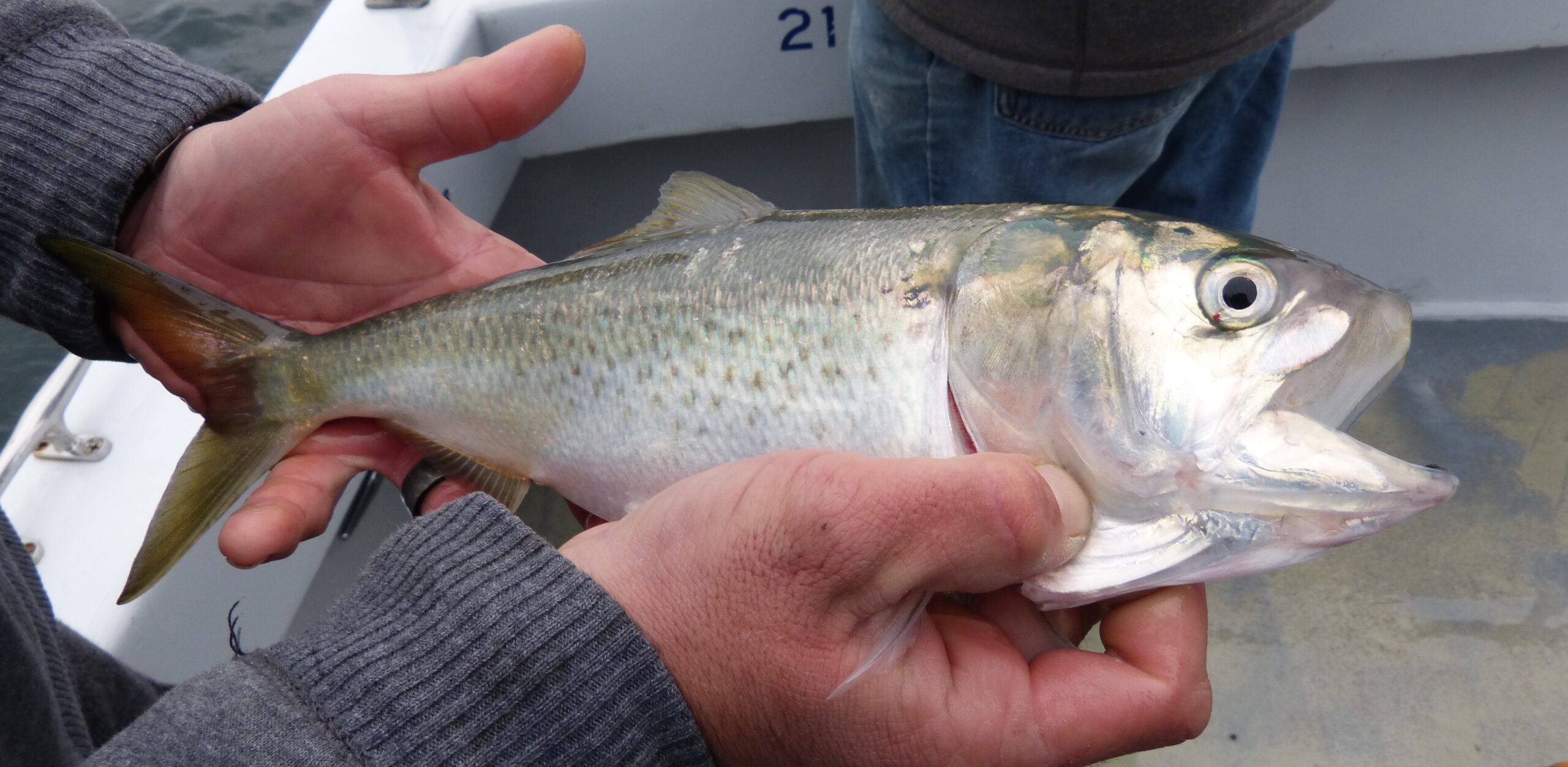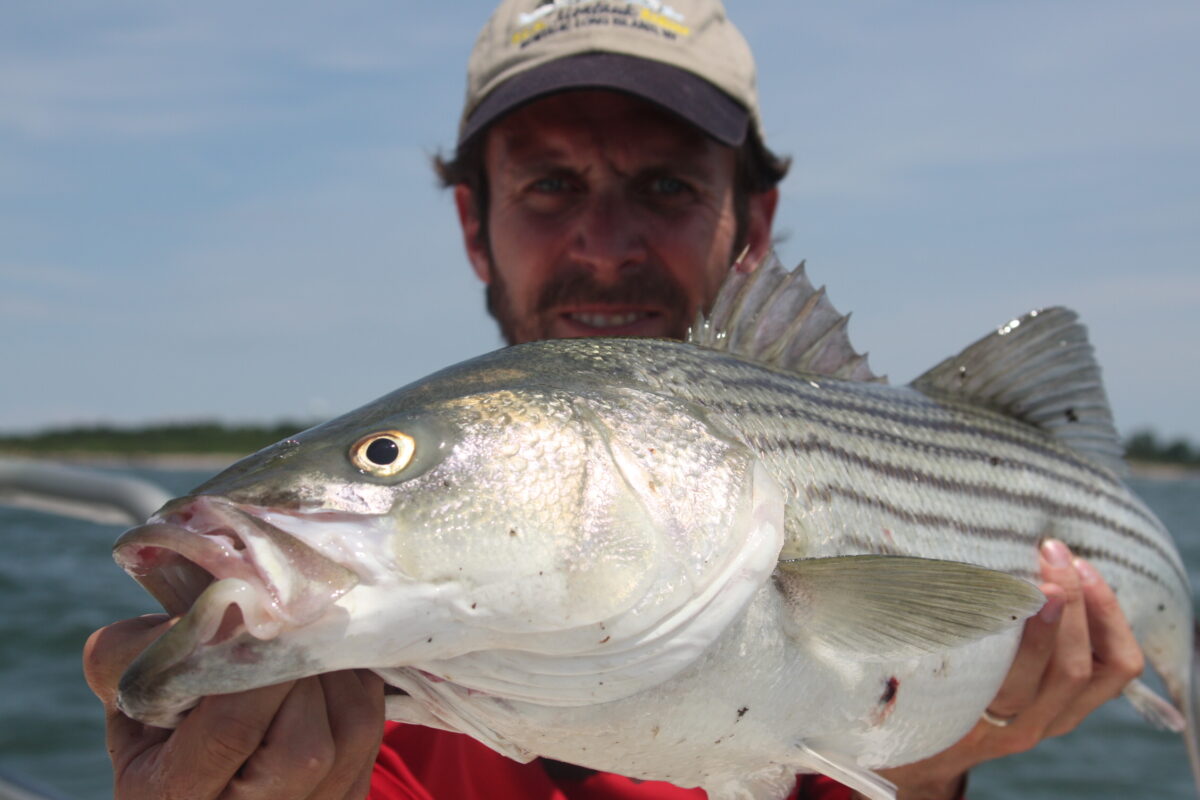
Thom Glace, the award winning watercolorist’s commissioned striper is one of the best illustrations of Brevoortia tyrannus ever seen – completed in 2021. Thom says he was over 90% complete on the first two pieces [weeks of work], and didn’t like what he’d done, so he started over again. Ouch! But that’s why he’s one of the best in the world.
This oily filter-feeder, menhaden, swims in schools so large that they block the sun from penetrating the water’s surface
1864: George Marsh’s Man and Nature, later retitled The Earth as Modified by Human Action, published in 1864, was the first major work to link the principles of naturalism with the rigor of ecology. Its publication marks the beginning of the modern environmental movement. In Extirpation of Aquatic Animals, he points to the decimation of menhaden as one of the key examples of our impact on the oceans.
1865: After the Civil War [Apr 9, 1865], the industrial menhaden industry began, and the mighty purse seine wreaked havoc on stocks, specifically in Virginia, Maryland, and Delaware [Delmarva]. There was a wealth to be made in the Chesapeake Bay. Northern industrialists headed south to exploit these rich, dense fish. Whale ships were converted, and the mighty purse seine made its first appearance.
By 1880, half a billion menhaden were being rendered into oil and fertilizer. There were almost three times as many menhaden ships as a whaling ship. A menhaden boat could produce more oil in a week than a whaling vessel could during its entire, multi-year voyage, and it could do so close to shore and out of harm’s way.![]()
In 1879, George Brown Goode released his monumental work, A History of the Menhaden, the first and still one of the most comprehensive studies of an American fishery . In 1880, we were running out of menhaden. The schools that Goode had studied, primarily north of Cape Cod, were gone. Even today, the menhaden’s range is a fraction of what it once was. Yet we continue to fish for them for one very compelling reason.
Today, and since recorded time
Menhaden are filet mignon for whales, mackerels, tunas, flounders, drums, sharks, bluefish, striped bass, and others. And they’re food staples for ospreys, egrets, herons, and other birds of prey that rely on accessing the Atlantic Ocean.
Menhaden are job and pleasure creators for thousands: sports fishing guides and captains, marinas, boating supply – fishing supply companies, accommodation proprietors, restaurants, and serve everyday surf-fishing sports anglers from Maine to the Chesapeake and beyond.
“Scientists say this plankton-to-predator pogie connection distributes energy throughout the coastal region [that includes Nova Scotia to northern Florida] and is crucial to a healthy ecosystem.” — Fly Fisherman Magazine / Hilary Hutcheson

An Atlantic Menhaden caught during a pelagic trip out of Ocean City, Maryland (3/1/2014). Photo by Jim Brighton.
Fatty acid omega-3
Found in coastal and estuarine waters from Nova Scotia to northern Florida, Atlantic menhaden play many important roles. They are filter feeders, primarily consuming phytoplankton and zooplankton in the water column. Menhaden support an important commercial fishery. They constitute the largest landings, by volume, along the Atlantic Coast of the United States. Menhaden are harvested for use as fertilizers, animal feed, and bait for fisheries, including blue crab and lobster.
They are a major source of omega-3 fatty acids, so they are also used to develop human and animal supplements, and herein lies the elephant in the living room.
John McMurray on Omega Protein
“The best available science says the reduction should be more to account for the needs of striped bass and other predators, but special interests are involved, and that’s where we see one company vying to take more than they should.” [Capt. John McMurray]
Do we need more cosmetics, animal feed, and fertilizers at the expense of menhaden?
Omega Protein is a reduction fishery company operating in the northwest Atlantic and the Gulf of Mexico. The 140-year-old company, based in Reedville, Virginia, is responsible for 90% of the total menhaden harvest in the United States, processing the harvest into cosmetics, pet food, and nutritional supplements. It employs 125 people year-round, doubling during peak fishing season. The livelihoods of these employees, Omega Protein spokespersons say, drive the company to push back against reductions in their catch. In a statement to Chesapeake Bay Magazine, Omega said, “These are the people whose livelihoods depend on a healthy menhaden population and will now face economic hardships from the reduction.” However, the company also states that the commission’s “decision to reduce the coastwide by 10%, while not preferred, is not an unreasonable step toward moving to the ecological management of this species.”

Captain Andrew Derr with a clients nice striper. Derr photo.
Menhaden miscellaneous
Weight: One pound (at maturity)
Length: Up to 15 inches
Lifespan: Ten to 12 years
Fecundity: Female – Annually 300,000 eggs, sexual maturity 3- to 5-years.

